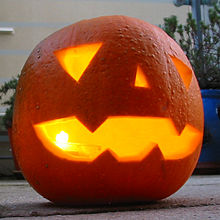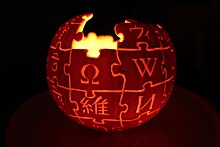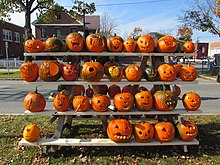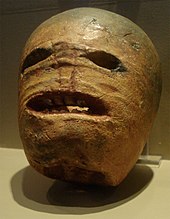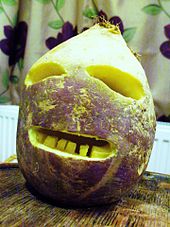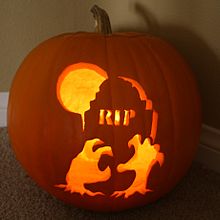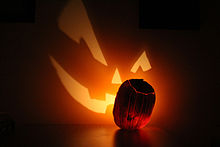
Halloween or Hallowe'en is a celebration observed in many countries on 31 October, the eve of the Western Christian feast of All Hallows' Day. It is at the beginning of the observance of Allhallowtide, the time in the liturgical year dedicated to remembering the dead, including saints (hallows), martyrs, and all the faithful departed. In popular culture, the day has become a celebration of horror, being associated with the macabre and supernatural.

Samhain, Sauin or Oíche Shamhna is a Gaelic festival on 1 November marking the end of the harvest season and beginning of winter or "darker half" of the year. It is also the Irish language name for November. Celebrations begin on the evening of 31 October, since the Celtic day began and ended at sunset. This is about halfway between the autumnal equinox and winter solstice. It is one of the four Gaelic seasonal festivals along with Imbolc, Bealtaine, and Lughnasa. Historically it was widely observed throughout Ireland, Scotland, and the Isle of Man. A similar festival is held by the Brittonic Celtic people, called Calan Gaeaf in Wales.

Trick-or-treating is a traditional Halloween custom for children and adults in some countries. During the evening of Halloween, on October 31, people in costumes travel from house to house, asking for treats with the phrase "trick or treat". The "treat" is some form of confectionery, usually candy/sweets, although in some cultures money is given instead. The "trick" refers to a threat, usually idle, to perform mischief on the resident(s) or their property if no treat is given. Some people signal that they are willing to hand out treats by putting up Halloween decorations outside their doors; houses may also leave their porch lights on as a universal indicator that they have candy; some simply leave treats available on their porches for the children to take freely, on the honor system.
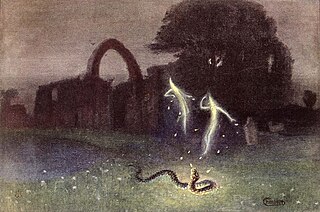
In folklore, a will-o'-the-wisp, will-o'-wisp, or ignis fatuus, is an atmospheric ghost light seen by travellers at night, especially over bogs, swamps or marshes. The phenomenon is known in much of European folklore by a variety of names, including jack-o'-lantern, friar's lantern, and hinkypunk, and is said to mislead travellers by resembling a flickering lamp or lantern. In literature, will-o'-the-wisp metaphorically refers to a hope or goal that leads one on, but is impossible to reach, or something one finds strange or sinister. Wills-o'-the-wisp appear in folk tales and traditional legends of numerous countries and cultures; notable named examples include St. Louis Light in Saskatchewan, the Spooklight in Southwestern Missouri and Northeastern Oklahoma, the Marfa lights of Texas, the Naga fireballs on the Mekong in Thailand, the Paulding Light in Upper Peninsula of Michigan, and the Hessdalen light in Norway.

Rutabaga or swede is a root vegetable, a form of Brassica napus. Other names include Swedish turnip, neep (Scots), and turnip. However, elsewhere, the name "turnip" usually refers to the related white turnip. The species Brassica napus originated as a hybrid between the cabbage and the turnip. Rutabaga roots are eaten as human food in various ways, and the leaves can be eaten as a leaf vegetable. The roots and tops are also used for livestock, fed directly in the winter or foraged in the field during the other seasons. Scotland, Northern and Western England, Wales, the Isle of Man, and Ireland had a tradition of carving the roots into Jack-o'-lanterns at Halloween.
The Santa Compaña is a deep-rooted mythical belief in rural northwest of Iberia: Galicia, Asturias (Spain) and Northern Portugal. It is the Iberian version of the pan-European mythical motif known as the Wild Hunt.
A jack-o'-lantern is a decoratively carved and internally lit pumpkin or turnip. associated with Halloween

Jack Pumpkinhead is a fictional character from the Land of Oz who appears in several of the classic children's series of Oz books by American author L. Frank Baum. Jack first appeared as a main character in the second Oz book by Baum, The Marvelous Land of Oz (1904), and returned often in subsequent books. He got the starring role in Ruth Plumly Thompson's 1929 book Jack Pumpkinhead of Oz.
The word "turnip" can refer to any of the following four vegetables:
Will-o'-the-wisp is the light phenomenon traditionally ascribed to ghosts.
Jack O'Lantern is an alias used by several supervillains appearing in American comic books published by Marvel Comics.

Apotropaic magic or protective magic is a type of magic intended to turn away harm or evil influences, as in deflecting misfortune or averting the evil eye. Apotropaic observances may also be practiced out of superstition or out of tradition, as in good luck charms, amulets, or gestures such as crossed fingers or knocking on wood. Many different objects and charms were used for protection throughout history.

Hop-tu-Naa is a Celtic festival celebrated in the Isle of Man on 31 October. It is the celebration of the traditional Gaelic festival of Samhain, the start of winter. It is thought to be the oldest unbroken tradition in the Isle of Man.
Punkie Night is a traditional West Country holiday practised on the last Thursday of October in Somerset. Children will march around with a punkie, that is a jack o'lantern traditionally made from a mangelwurzel, singing the following song :
It's Punkie Night tonight
It's Punkie Night tonight
Adam and Eve would not believe
It's Punkie Night tonight
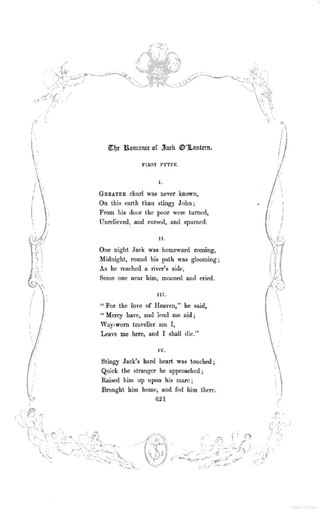
Stingy Jack O'Lantern, also known as Jack the Smith, Drunk Jack, Flaky Jack or Jack-o'-lantern, is a mythical character sometimes associated with All Hallows Eve while also acting as the mascot of the holiday. The "jack-o'-lantern" may be derived from the character.

Halloween is a celebration observed on October 31, the day before the feast of All Hallows, also known as Hallowmas or All Saint's Day. The celebrations and observances of this day occur primarily in regions of the Western world, albeit with some traditions varying significantly between geographical areas.

A pumpkin, in English-language vernacular, is a cultivated winter squash in the genus Cucurbita. The term is most commonly applied to round, orange-colored squash varieties, though it does not possess a scientific definition and may be used in reference to many different squashes of varied appearance.

In religious studies and sociology, the pizza effect is the phenomenon of elements of a nation's or people's culture being transformed or at least more fully embraced elsewhere, then re-exported to their culture of origin, or the way in which a community's self-understanding is influenced by foreign sources. Related phrases include "hermeneutical feedback loop", "re-enculturation", and "self-orientalization".
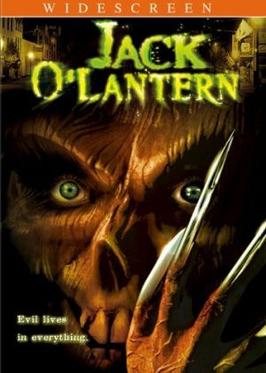
Jack O'Lantern is an American 2004 low budget independent horror film written and directed by Ron McLellen, and starring Dave R. Watkins, Kevin L. Powers and Tracy Yarkoni. First screened at the London FrightFest Film Festival, it was released on DVD in 2005 by Lions Gate Entertainment.
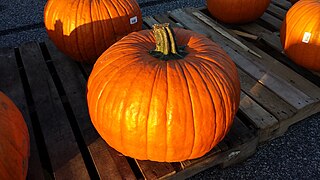
Connecticut field pumpkins are a type of pumpkin first attested in the 16th century. They are one of the oldest varieties of pumpkin in existence and are known as an heirloom plant. One of the most popular Halloween pumpkins, Connecticut field pumpkins are commonly used for autumn decorations and jack-o'-lanterns; a strain of Connecticut field pumpkins have been described as "the original commercial jack-o'-lantern pumpkin". Due to the variety's appearance and growth process, it is considered to be well-suited for ornamental use. It also has culinary uses, particularly in canning, and was used for medicinal purposes by Native Americans in the United States prior to European contact.
